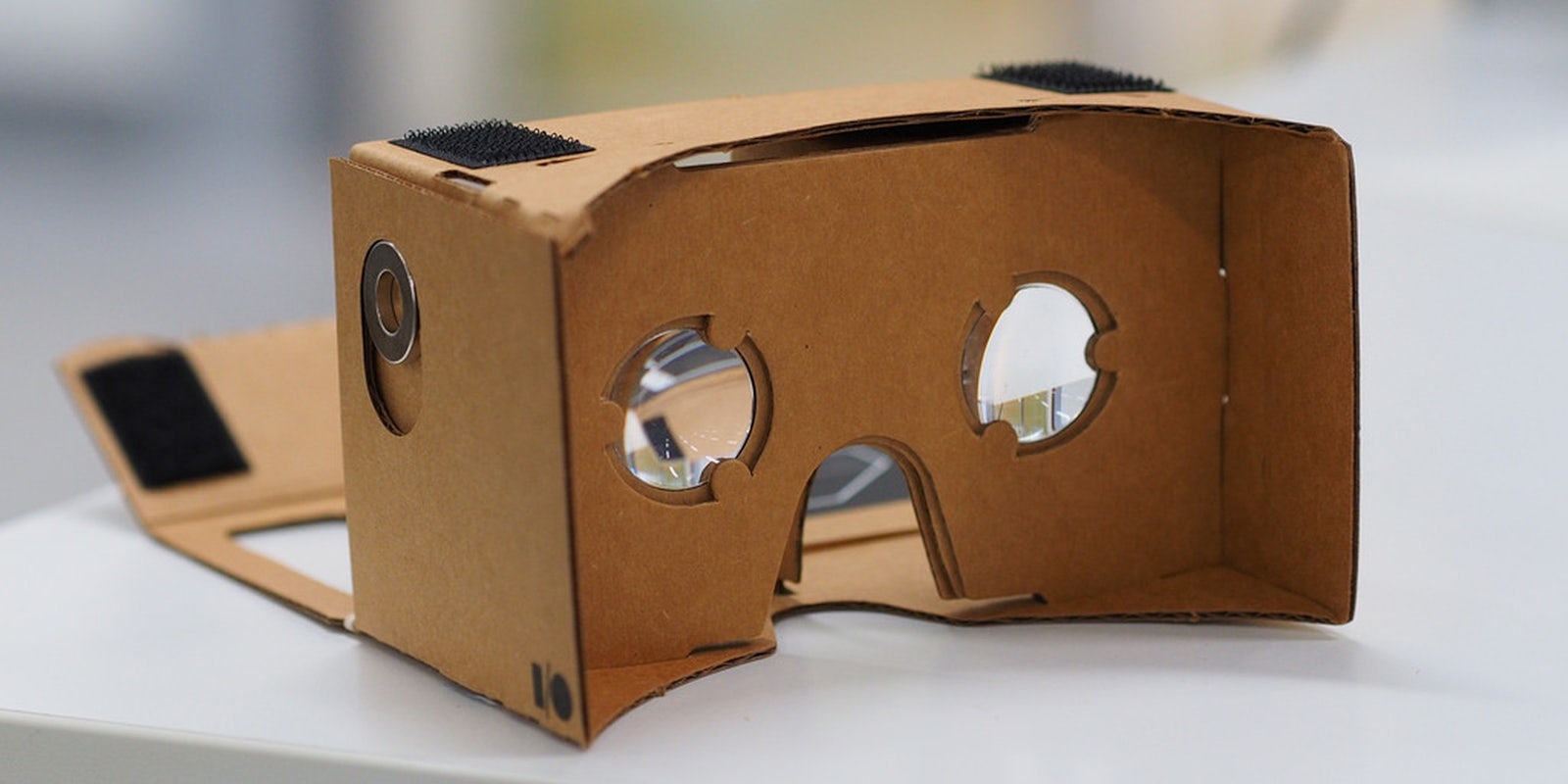In the span of roughly six months, over half a million people are slapping cardboard to their faces and escaping into virtual reality thanks to Google. Now, just as some of the best virtual reality games are starting to populate the Google Play Store, the company that gave rise to the ultra-affordable VR craze has made it even easier to join the club.
A new, even more detailed build guide for DIYers and manufacturers is now available, and if you’re not the handy type Google has some recommendations on where to score a kit from a number of third-party companies (which happen to include the same ones I’ve recommended before). You can score a pre-made version for roughly $25, including shipping.
If you happened to miss out on all the Cardboard news as it was happening, let me give you the backstory:
When Google handed out little folded chunks of cardboard at the end of its exceedingly long I/O keynote this year nobody was quite sure what to make of it. Perhaps it was the length and overall confusing nature of the presentation itself—or the fact that nobody really associates cardboard with technology in any way—but it wasn’t long before we realized how big the cardboard craze would become.
The folded cardboard was actually a self-contained kit to create a headset using some included acrylic lenses, an Android smartphone (which you of course have to supply yourself), and, you guessed it, cardboard. Just boot up the Cardboard app, slide your phone into place, slap the headset to your noggin, and enjoy.
For those not at the event, the first impressions of Cardboard came from Twitter. Attendees would absolutely not shut up about these little cardboard headset kits that Google had handed out, and everything being said about them was almost absurdly positive. Then, the kits started appearing on eBay and Craigslist for huge sums of money, and it was at that point that everyone had a collective nod and agreed that this was going to be big.
Don’t Be Evil
What happened next was probably the most surprising for anyone who follows the tech industry: Google didn’t sell them. The company handed them out to the individuals at the Google I/O event and then watched the madness ensue, but never did a Cardboard kit appear on a Google store page.
Don’t be evil—Once upon a time that simple phrase was Google’s internal slogan. It was a maxim that said no matter what, Google would be the good guys. There are plenty of people who feel that the message has since been lost, and in fierce competition with Apple to be the ultimate do-it-all tech company that Google has sacrificed some of what it once was in order to remain competitive.
That overly competitive nature—some might even say selfishness—was nowhere to be seen in Cardboard. While people were paying many times what a Cardboard kit was worth just to snag one from eBay, Google refused to cash in on the easy payday and instead encouraged would-be customers to simply build their own, even going so far as to link to the materials required on Amazon and elsewhere. Now, with over 500,000 kits being used, Google is further pushing the third-party manufacturers into the spotlight with glowing endorsements.
Taking into account just the kits that have been sold by third-party manufacturers—ignoring anyone who made their own, or would have purchased a kit from Google, but hasn’t yet invested in a different Cardboard headset—over $12 million has been spent on a product that Google itself popularized, but from which it hasn’t directly seen a single cent.
Yes, Cardboard relies on a smartphone to work, and at the moment Android is leading the charge on VR software which means people are in some way invested in the Google ecosystem, but the fact that of the matter is Google intentionally burned a decent paycheck. Samsung, on the other hand, just released a high-priced Cardboard-alike that is not only several times more expensive but also only works with Samsung’s own Galaxy Note 4.
If Google had come out with a headset that required one of the company’s own Nexus handsets in order to function, and then sold it on the online store, nobody would have gave it a second thought. Instead, over half a million people are now enjoying Cardboard for next to nothing.
Today, Google’s Cardboard design is one of the best tickets to virtual reality ever conceived, and it’s helping to usher in our VR future.
Photo via othree/Flickr (CC BY 2.0)


